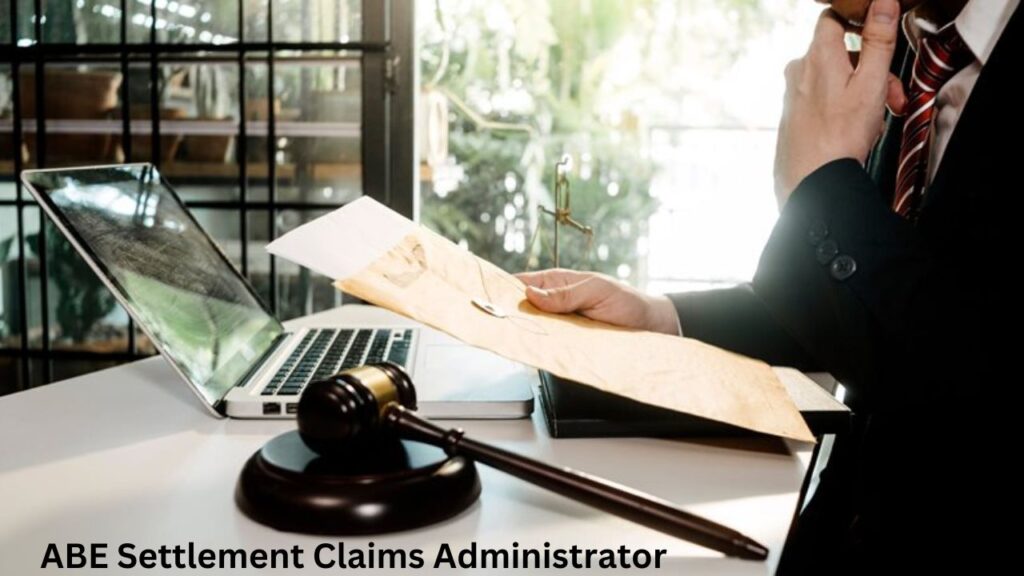AEB Settlement is a legally binding agreement between parties to resolve disputes without going to court, offering time and cost savings, privacy, and control over the outcome.
Introduction to AEB Settlement:
In the world of legal disputes and financial transactions, the term AEB Settlement is often mentioned. Whether you’re dealing with loans, mortgages, or other financial matters, understanding what an AEB Settlement is and how it works can save time, money, and stress. This guide will explain AEB Settlement in simple terms, covering what it means, how it works, and why it’s important.
What Does AEB Settlement Mean?

AEB Settlement stands for Agreement to Enter into a Binding Settlement. In simple terms, it’s an agreement between two or more parties to settle a dispute without going to court. Instead of fighting it out in a long and expensive lawsuit, both sides agree to terms that resolve the issue.
Once the agreement is signed, it becomes legally binding, meaning everyone involved must follow the rules set out in the settlement.
Why Do People Use AEB Settlements?
People and businesses choose AEB Settlements for several reasons:
- Saving Time: Court cases can take months or even years. An AEB Settlement allows the issue to be resolved quickly.
- Saving Money: Going to court can be very expensive due to lawyer fees and court costs. Settling out of court is often much cheaper.
- Privacy: Court cases are public, meaning anyone can find out the details. AEB Settlements can be kept private, protecting the reputations of those involved.
- Control Over the Outcome: In court, a judge or jury decides the outcome, which might not please everyone. With an AEB Settlement, both sides can negotiate terms that work for them.
How Does the AEB Settlement Process Work?
The process of reaching an AEB Settlement involves several steps:
- Negotiation: Both sides sit down to discuss the issue and try to agree on how to resolve it. This might involve lawyers, mediators, or direct talks between the parties.
- Drafting the Settlement Agreement: Once both sides agree on the terms, a written agreement is created. This document clearly states what each side must do to settle the dispute.
- Signing the Agreement: After the agreement is written, all parties must sign it. The agreement is enforceable after it is signed.
- Carrying Out the Terms: Each side must do what they agreed to in the settlement. If one side doesn’t follow through, the other can take legal action to enforce the agreement.
Read: https://guia-automovil.com/2023/02/06/las-mejores-pick-ups-para-este-2023 – Complete Guide!
Key Parts of an AEB Settlement Agreement:
An AEB Settlement Agreement usually includes the following important parts:
- Who’s Involved: The agreement will list the names of all parties involved in the dispute.
- The Background: A brief explanation of what led to the dispute and why both sides decided to settle.
- The Settlement Terms: This is the heart of the agreement. It spells out exactly what each side must do to resolve the dispute.
- Confidentiality: Often, the agreement will include a promise that neither side will talk about the details of the settlement.
- Release of Claims: By signing the agreement, both sides usually agree not to sue each other in the future over the same issue.
- Which Laws Apply: The agreement will state which country’s or state’s laws will govern the settlement.
Legal Considerations in AEB Settlements:
Before agreeing to an AEB Settlement, it’s important to keep a few legal points in mind:
- Get Legal Advice: Always consult with a lawyer before signing a settlement agreement. A lawyer can help ensure that your rights are protected and that the agreement is fair.
- Make Sure It’s Voluntary: The settlement must be agreed upon freely by all sides. No one should feel forced or pressured into signing.
- Check for Compliance: Especially in financial disputes, make sure the settlement follows all relevant laws and regulations.
- Understand the Consequences: Once signed, the agreement is binding. Make sure you fully understand what you’re agreeing to and what it will mean for you or your business.
Benefits of AEB Settlements Over Court Cases:

Opting for an AEB Settlement has several advantages compared to taking a case to court:
- Faster Resolution: Court cases can drag on for a long time. Extremely faster settlement can be achieved.
- Lower Costs: Court battles can be very expensive. Settling out of court usually costs less.
- Privacy and Confidentiality: Court cases are public, meaning the details are open for everyone to see. AEB Settlements are private and can keep sensitive information confidential.
- Better Relationships: Court cases can strain or even ruin relationships. Settlements are often less adversarial, which can help maintain professional or personal relationships.
When to Consider an AEB Settlement?
You should consider an AEB Settlement in situations where:
- You Want to Avoid Court: If you’d prefer to avoid the time, cost, and stress of going to court, a settlement may be a good option.
- You Need a Quick Resolution: If you need the dispute resolved quickly, an AEB Settlement can be faster than a court case.
- Privacy is Important: If you don’t want the details of your dispute to be public, a settlement can help keep things private.
- Both Sides are Willing to Compromise: If both parties are willing to negotiate and find a middle ground, an AEB Settlement can be a good solution.
FAQ’s:
1. What is an AEB Settlement?
An AEB Settlement is an Agreement to Enter into a Binding Settlement, where parties resolve disputes out of court with legally binding terms.
2. Why choose an AEB Settlement over going to court?
AEB Settlements save time, reduce costs, ensure privacy, and give parties control over the outcome, unlike lengthy and public court cases.
3. How is an AEB Settlement Agreement created?
The agreement is created through negotiation, drafting of terms, signing by all parties, and then carried out with legal enforceability if necessary.
4. What key elements are in an AEB Settlement Agreement?
The agreement includes party identification, background, settlement terms, confidentiality clauses, release of claims, and applicable laws.
5. When should you consider an AEB Settlement?
Consider an AEB Settlement if you want to avoid court, need a quick resolution, value privacy, and both sides are open to compromise.
Conclusion:
AEB Settlements offer a practical solution for resolving disputes outside of court, providing benefits like speed, cost-efficiency, privacy, and control over outcomes. By understanding the process and key elements involved, parties can avoid the stress and expense of litigation while achieving mutually beneficial resolutions. Always seek legal advice to ensure the settlement is fair, legally sound, and in your best interest, making AEB Settlements a valuable tool in legal and financial matters.
Read More:



